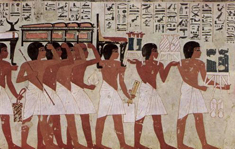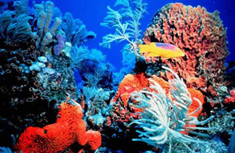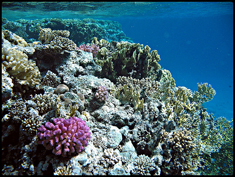About Egypt
|
|
Ecotourism
Egypt in 2004, at the dawn of the new millennium, witnessed the Ministry of Tourism's National Declaration of Ecotourism of the Southern Red Sea Region, the first ever declaration of its kind and purpose in the Middle East and Africa.
A growing number of tourists whose priorities are different from those of the mainstream are coming to the Red Sea Region in their search for peace, wilderness, unspoiled culture and a pristine natural environment.
About the Area
It consists of an enormous water catchment area that supplies water to the Red Sea. The region has a 100 km coastline extending from Marsa Alam to Wadi Lahmy. Wadi El-Gimal which lies within the region, is a diverse natural heritage area that was formerly declared a Protected Area in January 2003. It is deemed important because of its unique biological resources and marine ecosystems.
|
 |
The mountains of the Red Sea may offer solitude to the present day ecotourism, but in ancient times they were the source of substantial mineral wealth and a vital part of the economy of the Ancient Egyptian Empire. Mines in the Eastern Desert produced precious metals, gemstones and porphyry. The Wadi El-Gimal Hamata Protectorate Area produced great quantities of emeralds, gold and amyant. The mineral wealth of the region played a critical role in the development of the ancient Egyptian civilization which is evidenced by the numerous antiquities and shrines that still remain.
|
 |
This zone is well known for its desert, mountains and valleys. In fact, Egypt's highest diversity of terrestrial plants and animals occurs in the Eastern Desert. Vegetation plays a vital role in sustaining life in the valleys by providing important wood, cover, nesting sites for animals, and medicine and utilitarian supplies for humans living in the area. The vegetation provides critical habitat for birds seeking both nesting sites and shelters. It provides a source of food for mammals such as camels and gazelles that inhabit the valley.
|
 |
The Fringe Reefs ecosystem is the most extensive reef type along Egypt's Red Sea , and is among the longest found anywhere in the world. The number of coral species ranges from 23 to 35 species per site. It is the collective community of reef based plants and animals, comprising an unparalleled world of color, texture, shape and animation that makes coral reefs such special places to experience.
|
 |
Egypt's Coral Reefs are highly complex ecosystems that provide a home to thousands of species of different flora and fauna in any given area. It is the hard calcium-based skeletal part of the coral (which are animals) that provides the framework to the overall reef ecosystem and literally builds the foundation of what is termed reefs. They contain one of the highest known manifestations of plant and animal diversity on the planet. Coral Reefs of the Red Sea support approximately 400 fish species that utilize corals for shelter, food or as a breeding ground.
|
 |
Ecolodges
Lodging facilities and hospitality within the context of ecotourism in the south Red Sea region revolve around developing ecolodges , which differ from traditional hotels. The term "ecolodge" is a new tourism industry term used to identify a nature - dependant tourist facility. Such a facility is developed and managed in an environmentally sensitive manner in order to protect its operating environment. It must be stressed that the most important thing about an ecolodge is the quality of the surrounding environment. Critical issues would include the nearby natural and cultural attractions , the way in which ecotourism is operated and marketed , and the way in which local people are involved in the process of developing ecolodges.
|
 |
| |
|
|
| |
|
|